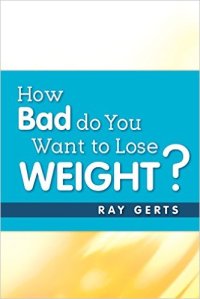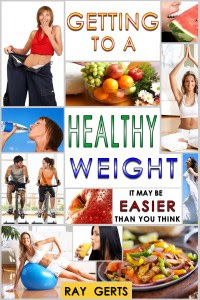We take so much for granted in our lives and than we wonder why we can't control our weight.
You may think twice about "salt" after reading this. I found this post on VeryWell.com. Take a minute and read this, it might be one of the reasons you have body fat.
We all know excess salt in our diet raises our blood pressure. But did you know that Americans have a 90 percent lifetime probability of developing high blood pressure? Even if your blood pressure is normal now, if you continue to eat the typical American diet, you are at risk of acquiring hypertension during your lifetime. In addition to causing 62 percent of strokes and 49 percent of coronary heart disease, high blood pressure also harms other body systems.
2
The Cardiovascular Side Effects of Salt
/about/GettyImages-165562928-567adfe63df78ccc15555c85.jpg)
In addition to elevating blood pressure, salt has other damaging effects on the cardiovascular system. Research has established such a strong relationship between salt consumption and death from stroke, that it is all not accounted for by salt’s effect on blood pressure. Excess use of salt over time leads to stiffening of the arteries. Recent research also found that blood vessel function is suppressed within 30 minutes of eating a high-salt meal.
3
Salt's Impact on Autoimmune Diseases
/about/GettyImages-91559463-567ae03a3df78ccc15555ca1.jpg)
Excess sodium may exacerbate the inflammation associated with several autoimmune conditions. Inflammation-promoting cells become elevated in people who eat salty fast food. In fact, studies of these immune cells in different sodium concentrations corroborate sodium as the culprit. It is also observed that mice, predisposed to an autoimmune disease, develop disease quickly when given a high-salt diet compared to a lower sodium diet.
4
An Increased Osteoporosis Risk
/about/GettyImages-172674777-567ae1463df78ccc15555d4a.jpg)
Consuming a large amount of salt also puts you at risk for osteoporosis because excess dietary sodium promotes urinary calcium loss, leading to calcium loss from bone, decreasing bone density. Even in the presence of a high calcium diet, high salt intake results in net calcium loss from bone.
5
Ulcers and Stomach Cancer
/about/GettyImages-155358161-567ae1895f9b586a9e8c05b8.jpg)
Salt is the strongest dietary factor relating to stomach cancer. A high-salt diet also increases growth of the ulcer-promoting bacteria H. pylori in the stomach, which is also a risk factor for gastric cancer.
6
Salt's Other Effects
/about/GettyImages-184302084-567ae2765f9b586a9e8c0638.jpg)
High dietary sodium has been implicated in kidney disease, headaches, and obesity. A high-salt diet may also increase the severity of symptoms for asthma sufferers.
7
Put Down the Salt Shaker
/about/GettyImages-AA026368-567ae37b5f9b586a9e8c133f.jpg)
It has been estimated that 2.3 million deaths per year worldwide are due to excess salt consumption, and many (40 percent) of these deaths are in people under the age of 70. Excess sodium needlessly shortens millions of lives. This applies to regular table salt as well as the gourmet salts that are trendy right now. Reducing your intake of sodium is essential for anyone who wants to remain in good health. A person eating the Standard American Diet (SAD) consumes about 500 percent more sodium than they actually need every single day. Almost 80 percent of our sodium comes from processed foods and restaurant meals. By, preparing your own meals, you avoid most of the sodium in the American diet.
8
Salt is Not a Health Food
/about/GettyImages-532878345-56a5b7a55f9b58b7d0de1a15.jpg)
For millions of years, human diets contained no added salt, only what was naturally present in food. In the United States, our salt intake is about 3500 mg. per day. The American Heart Association recommends a maximum of 1500 mg. daily. I recommend even less. Salt is not health-promoting. Rather than use salt, it is better to spice up your dishes with natural herbs and other flavorful spices. A Nutritarian diet with plenty of fresh greens and other colorful vegetables, including raw chopped onions and cooked mushrooms, beans, nuts, seeds and some fruit is the ideal diet.
You can tweet me at #ray0369
I write several blogs and e-books, check out some of my other sites.
gettingtoahealthyweight.blog
idropped40pounds.wordpress.com
howbaddoyouwanttoloseweight.blogspot.com
blogonweight.blogspot.com
idropped40pounds.wordpress.com
howbaddoyouwanttoloseweight.blogspot.com
blogonweight.blogspot.com
If you really want to lose your body fat than look for my e-books at the websites listed below. You'll get information on Healthy eating, exercise, and diet. Instead of spending hours on the internet reading dozens of posts, you can save time by picking up one of my e-books.
There are two e-books. “How Bad Do You Want To Lose Weight?” is available at all the online bookstores selling for $1.99. Go to any of the websites below and search the title to find my e-book. This book gives you all you need to lose weight without spending money on gym memberships, diet plans or meal plans. Look for my book. at Amazon.com, B&N.com, iBooks, Kobo.com, Scribd.com, or Gardner Books in the U.K.
My new e-book is available on Smashwords.com, just type “getting to a Healthy Weight” in the search box at the top of the home page. I’ll give you a discount coupon you can use at checkout. (PJ42H) not case-sensitive the price is $1.99 w/coupon







/GettyImages-450110183-56d2f7753df78cfb37d114be.jpg)

/187414206-56a6b3865f9b58b7d0e45f81.jpg)
